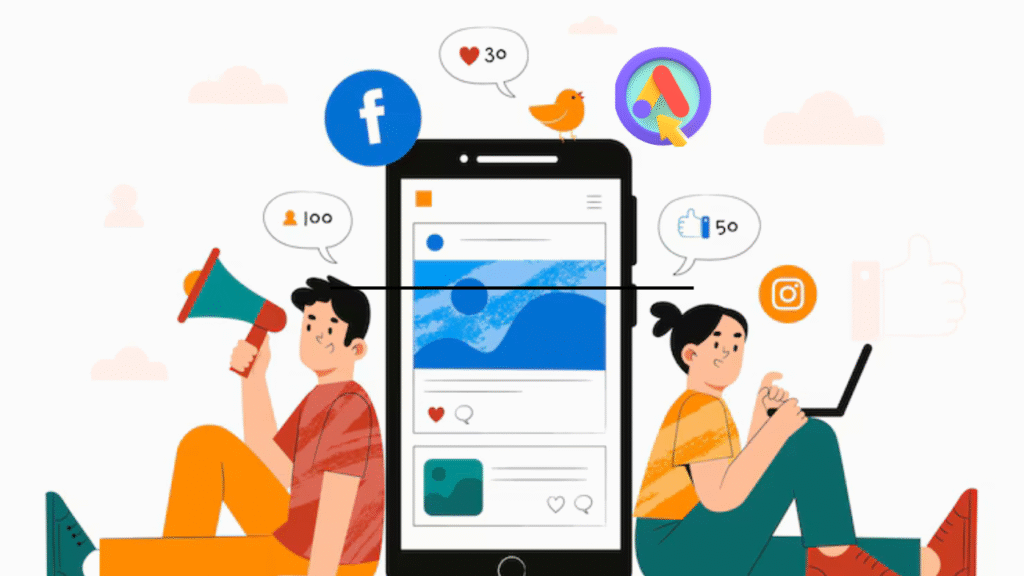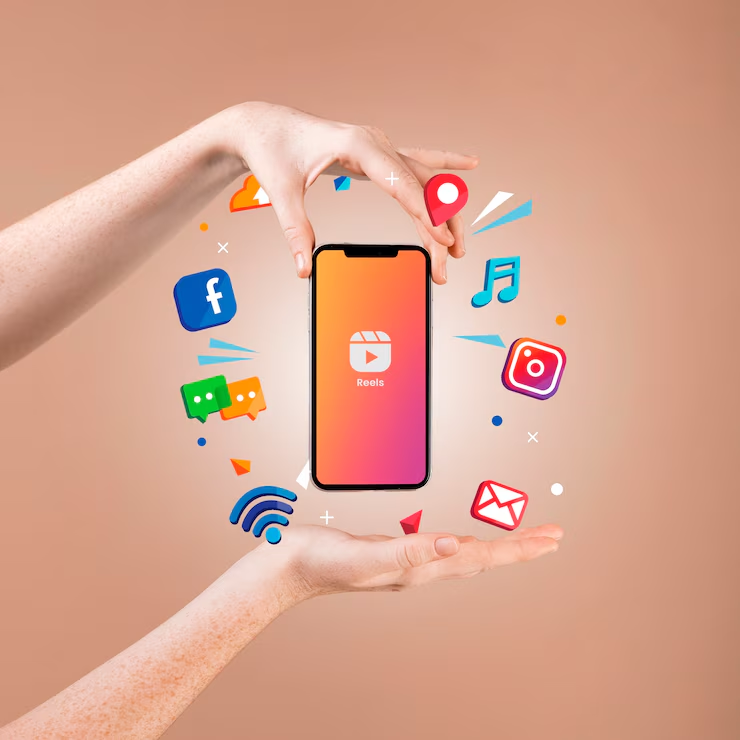In the ever-evolving world of digital marketing, one debate never seems to die: Google Ads vs Facebook Ads. As we enter 2025, this decision is more crucial than ever for businesses, freelancers, and marketers alike.
Whether you’re a startup trying to make your first sale, a service-based business chasing leads, or a content creator looking to grow an audience—choosing the right platform can make or break your online strategy. While both Google Ads and Facebook Ads are powerful in their own right, they serve very different purposes.
In this detailed guide, you’ll learn:
What each platform is all about
Key differences and similarities
A beginner-friendly roadmap for each
Real-world use cases
Expert tips on how to combine both effectively
Let’s dive in.
🔍 What Is Google Ads?
Google Ads (formerly known as Google AdWords) is Google’s advertising platform that lets you display paid ads on its search engine results pages (SERPs), YouTube, Gmail, and the Google Display Network (millions of partner sites). It’s intent-based advertising—you show ads to users who are actively searching for what you offer.
✅ Best for:
Service-based businesses
High-intent buyers
Local services, SaaS, eCommerce, lead generation
📌 Popular Ad Formats:
Search Ads (text-based)
Display Ads (image/video across sites)
YouTube Ads
Shopping Ads (for eCommerce)
App Promotion Ads
Google Ads is ideal if you want quick, measurable ROI and can manage keyword targeting.
📱 What Is Facebook Ads?
You can use Facebook Ads to run paid promotions on Facebook, Instagram, Messenger, and other connected platforms.
Instead of targeting search intent, it’s based on audience interests, behaviors, demographics, and psychographics. It’s great for brand discovery, storytelling, and visual campaigns.
✅ Best for:
Building brand awareness
Nurturing cold audiences
Visual product-based brands
Social-first businesses like fashion, beauty, fitness, and lifestyle
📌 Popular Ad Formats:
Image/Video Ads
Stories/Reels Ads
Carousel Ads
Lead Generation Forms
Messenger Ads
With Facebook Ads, you interrupt the scroll with eye-catching creatives and compelling messages.

🆚 Key Differences: Google Ads vs Facebook Ads
Feature Google Ads Facebook Ads
Targeting Keywords (search intent) Interests, behaviors, demographics
Platform Google Search, YouTube, Gmail, GDN Facebook, Instagram, Messenger
User Intent High (users actively searching) Low to medium (discovery mode)
Cost per Click Higher but more qualified Lower, more awareness-based
Learning Curve Requires keyword research Requires creative testing
Best for Conversions, leads Brand awareness, retargeting
Both platforms offer excellent targeting, analytics, and reach. But your choice should depend on your business goals and sales funnel stage.
🧭 Roadmap for Beginners: How to Choose Between Google Ads & Facebook Ads
Let’s understand it one step at a time so it’s easier to choose.
Step 1: Choose your main goal
Think about what you want to achieve with this ad campaign.
💰 If it’s direct conversions (sales, bookings, form submissions):
→ Start with Google Ads
📣 If it’s brand visibility, audience building, or storytelling:
→ Go with Facebook Ads
Step 2: Know Your Audience
Is your audience already searching for your offer?
→ Google Ads will perform well.
Do you need to introduce your brand to them first?
→ Facebook Ads lets you create demand.
Step 3: Choose the Right Funnel Stage
Funnel Stage Best Ad Platform
Top of Funnel (Awareness) Facebook Ads
Middle of Funnel (Consideration) Both
Bottom of Funnel (Conversion) Google Ads
Step 4: Set a Test Budget
Start small—₹5,000 to ₹10,000. Monitor:
CPC (cost per click)
CTR (click-through rate)
CPA (cost per acquisition)
ROAS (return on ad spend)
Step 5: Design Platform-Specific Content
Google Ads = keyword-rich, conversion-focused text
Facebook Ads = visual, creative storytelling
💡 Real-World Scenarios: Which Ad Platform to Choose?
Scenario 1: A New eCommerce Brand
Goal: Introduce a lifestyle product to new users
✅ Start with Facebook Ads to build awareness
✅ Retarget visitors using Google Display Ads
Scenario 2: A Local Home Repair Service
Goal: Get service calls and appointments
✅ Use Google Ads with keywords like emergency repair near me to reach people who need quick help
✅ Later use Facebook Ads for reviews, videos, and referrals
Scenario 3: A Digital Coach or Consultant
Goal: Generate webinar signups or free lead magnets
✅ Facebook Ads for low-cost lead generation
✅ Use Google Search Ads to capture high-intent leads
⚖️ Pros & Cons Summary
✅ Google Ads Pros
• High buyer intent
• Faster ROI
• Easy to track conversions
• Works well for B2B & B2C
❌ Google Ads Cons
• Higher CPC in competitive niches
• Requires keyword mastery
• Poor creative flexibility
✅ Facebook Ads Pros
• Lower CPC
• Great for storytelling & emotion-driven content
• Excellent audience targeting
• Works well for mobile-first consumers
❌ Facebook Ads Cons
• Lower intent = slower ROI
• Creative fatigue happens fast
• Algorithm can be unpredictable
Pro tip: Use both Facebook Ads and Google Ads together to get the best results.
A smart funnel in 2025 looks like this:
- Top Funnel (Facebook): Use engaging reels, carousels, and short videos to attract and educate.
- Middle Funnel (Facebook/Google Display): Retarget visitors who didn’t convert.
- Bottom Funnel (Google Search): Bid on keywords for ready-to-buy users.
- Follow-Up (Email/Retarget): Use Facebook Lead Ads and Google Ads remarketing.
This omnichannel approach can increase conversions by 30–50% over single-platform campaigns.
💼 Google Ads or Facebook Ads: Which One Should Freelancers and Small Businesses Choose?
If you’re a solo entrepreneur, coach, or digital service provider, here’s a simple guide:
Business Type Start With When to Add Second Platform
Freelancer/Consultant Google Ads After 2–3 campaigns, run Facebook lead ads
E-commerce Facebook Ads Add Google Shopping ads once you get traction
Local Business Google Ads Add Facebook for reviews & retargeting
Blogger/Creator Facebook Ads Use Google Display to grow traffic later
📊 How Much Do They Cost?
Here’s a quick cost overview (based on Indian ad spend data in 2025):
Metric Google Ads – Facebook Ads
Avg. CPC ₹15–₹100 (varies by keyword) ₹5–₹30 (based on audience)
CTR 2%–5% 1%–3%
Conversion Rate 3%–10% 1%–6%
Setup Time Moderate Easy
Learning Curve High Medium
✅ Final Verdict: Google Ads vs Facebook Ads in 2025
There’s no one-size-fits-all answer—but here’s a simplified guide:
• Choose Google Ads if:
You want immediate, measurable results from users with high intent. Perfect for service businesses, SaaS, eCommerce, and lead gen.
• Choose Facebook Ads if:
You want to build a brand, educate your audience, or introduce new products to cold traffic. Ideal for creators, product-based businesses, and visual brands.
🔄 Best of All Worlds:
Use Facebook Ads to attract and Google Ads to convert.
🛠️ Tools to Help You Get Started
• Google Keyword Planner – For finding ad keywords
• Meta Ads Manager – To run Facebook/Instagram ads
• Canva / Adobe Express – Design your ad creatives
• Google Analytics & Facebook Pixel – Track conversions
• Ubersuggest / SEMrush – Keyword insights & competition data
✨ Final Thoughts
In 2025, advertising isn’t about choosing between platforms—it’s about choosing the right strategy for your audience and business stage. Whether you’re investing ₹1,000 or ₹1,00,000, start small, learn fast, and scale smart.
👉 Pro Tip: Don’t overthink. Start with one, track your metrics, and grow from there.
🌟 Extended Conclusion: Mastering Your Ads Strategy in 2025 and Beyond
Choosing between Google Ads and Facebook Ads is just the start of your digital marketing journey. The true magic happens when you consistently test, learn, and refine your approach. Here are some additional insights and tips to help you master your advertising strategy in 2025 and beyond:
- Embrace Continuous Learning
Both Google and Facebook frequently update their algorithms, policies, and ad features. Staying updated through official blogs, forums, and courses will keep you ahead of the curve. Platforms like Google Skillshop and Facebook Blueprint offer free certifications to sharpen your skills. - Focus on Data-Driven Decisions
Set clear KPIs (Key Performance Indicators) before launching campaigns. Use data to understand what works—whether it’s click-through rates, cost per conversion, or customer lifetime value. Regularly analyze your campaigns with tools like Google Analytics and Facebook Ads Manager Insights. - Optimize for Mobile Users
More than half of internet traffic worldwide comes from mobile devices. Ensure your ads and landing pages are mobile-optimized to improve user experience and boost conversions. - Leverage Remarketing and Custom Audiences
Don’t let warm leads slip away. Use remarketing campaigns on both platforms to re-engage visitors who showed interest but didn’t convert. Facebook’s Custom Audiences and Google’s remarketing lists are powerful tools to stay top of mind. - Experiment with New Formats
In 2025, videos are the most popular type of content on social media and search engines. Try using short videos, Stories, Reels, and interactive ads to grab people’s attention.
On Google, YouTube ads are a great way to reach users with rich video content.
- Personalize Your Messaging
Create ads that match the needs and interests of different groups in your audience.
Personalization increases relevance and conversion rates. For example, show different ads based on demographics, purchase history, or engagement behavior.
- Align Your Ads with Your Sales Funnel
Ensure that your ad messaging matches the stage your audience is in—from awareness to consideration to decision. For example, use educational content at the top of the funnel and strong calls-to-action at the bottom.
🚀 Your Next Steps: Turning Knowledge into Action
• Start small: Launch your first campaign on one platform with a modest budget.
• Track everything: Install tracking pixels and UTM codes to gather insights.
• Test creatives: Try different headlines, images, and calls to action.
• Analyze results: Look beyond clicks — focus on conversions and ROI.
• Grow wisely by putting more money into ads that give good results and stopping the ones that don’t work.
Remember, digital advertising is not a one-time effort. It’s an ongoing cycle of testing, optimizing, and scaling. into

🎯 Final Encouragement for Beginners
Beginning with digital ads can feel like a lot, but don’t let that hold you back. Every expert started as a beginner who gave it a try. Whether you go with Google Ads, Facebook Ads, or both, the important thing is to start.
Your audience is out there, searching, scrolling, and waiting for a solution you provide. By understanding these platforms and applying a clear strategy, you can unlock incredible growth and success in 2025.
So, gear up, start testing, and watch your business thrive with the power of digital advertising!
🌐 Looking Ahead: The Future of Google Ads and Facebook Ads in 2025 and Beyond
Digital marketing keeps changing, so being flexible is important for lasting success.
As AI, machine learning, and privacy regulations evolve, both Google Ads and Facebook Ads are expected to introduce smarter targeting, automation, and new ad formats.
Here are some upcoming trends and helpful tips you should keep in mind for the future.
- AI-Powered Advertising
Both platforms are investing heavily in AI-driven campaign automation. Features like Google’s Performance Max campaigns and Facebook’s Advantage+ Shopping Campaigns use machine learning to optimize targeting and bidding in real time. Beginners should leverage these tools while still monitoring results closely to guide strategy. - Privacy-First Marketing
With increasing user privacy concerns and regulations (like GDPR and CCPA), expect more restrictions on third-party tracking and cookie usage. Both Google and Facebook are adapting by introducing privacy-centric solutions like Google’s Privacy Sandbox and Facebook’s Aggregated Event Measurement. Marketers need to focus on first-party data and consent-based targeting. - Cross-Platform Integration
The future is omnichannel marketing. Integrating data and campaigns across platforms will create seamless customer journeys. Tools like Facebook Conversions API and Google Tag Manager help unify tracking.Using Google and Facebook ads along with email marketing, social media posts, and SEO helps you get better results.
Video and interactive content will stay popular
Short and interesting videos will keep taking over social media and search pages.Marketers should invest time and resources into creating authentic videos, live streams, and interactive formats like polls and augmented reality ads.
- Voice Search and Smart Assistants
Google Ads will increasingly incorporate voice search queries as smart speakers and voice assistants grow in popularity. Optimizing for conversational keywords and natural language queries will become vital.
🛡️ Avoid These Common Pitfalls in Your Ads Strategy
Even seasoned marketers fall into traps that beginners should watch out for:
• Not Tracking Properly: Always set up conversion tracking and pixel implementation before launching campaigns.
• Ignoring Mobile Users: Over 70% of Facebook and Google traffic comes from mobile devices — optimize accordingly.
• Relying on One Ad Set or Creative: Test multiple ads to find what truly resonates.
• Setting and Forgetting Campaigns: Regularly review and optimize your campaigns; stop what doesn’t perform.
• Overcomplicating Targeting: Start simple with broader audiences and narrow down as you learn.
🎉 Success Stories: Inspiration From Real Businesses
To motivate you further, here are brief examples of how businesses leveraged these platforms successfully:
• Local Café: Increased walk-in customers by 35% in 3 months using Google Ads targeting “best coffee near me” keywords.
• Online Boutique: Grew Instagram followers by 50K and increased sales by 40% through Facebook carousel ads and influencer collaborations.
• Consultant: Generated 200+ qualified leads for a coaching program in 6 weeks with a mix of Facebook lead ads and Google Search ads.

💬 Final Words — Your Digital Ads Journey Starts Now!
The choice between Google Ads and Facebook Ads isn’t just about the platform—it’s about your unique business goals, audience, and creativity. Begin with simple steps, stay open to learning, and try new things without fear.
By combining smart strategy, continuous optimization, and persistence, you’ll turn clicks into customers and grow your brand in 2025 and beyond.
Ready to take the leap?
Remember: The most important step is the very first one. So go ahead, pick your platform, craft your message, and launch your first campaign. The digital world is waiting for you!
If you want, I can also help you:
• Create custom ad copy for your niche
• Build an easy-to-follow campaign checklist
• Create a basic starter kit to help beginners run ads on Google and Facebook.
• Or even draft email sequences to nurture your leads
Just ask anytime!
Custom Digital Marketing Plan: Google Ads & Facebook Ads Strategy for Your Business
- Define Your Business Goals Clearly
• Do you want to generate leads, boost sales, build brand awareness, or grow your audience?
• Set specific, measurable goals (e.g., 100 leads/month, ₹50,000 sales/month). - Identify Your Target Audience
• Demographics: Age, gender, location
• Interests & behaviors (especially for Facebook Ads)
• Search intent and keywords (especially for Google Ads) - Set Your Budget
• Decide your total monthly ad spend.
• Start with 60% budget on the platform most aligned with your goals.
• Reserve 40% for testing the other platform or remarketing. - Create Platform-Specific Campaigns
Google Ads Campaigns:
• Search Campaigns targeting keywords with buyer intent.
• Shopping Campaigns (if you sell physical products).
• Display Remarketing to retarget website visitors.
• Use keyword tools like Google Keyword Planner to find best keywords.
Facebook Ads Campaigns:
• Brand Awareness Campaign with engaging videos or images.
• Lead Generation Campaign using Facebook Lead Ads.
• Retargeting Campaign for website visitors or video viewers.
• Design mobile-friendly, visually appealing creatives. - Set Up Tracking & Analytics
• Install Google Analytics on your website.
• Set up Google Ads conversion tracking.
• Add the Facebook Pixel for retargeting and conversion tracking.
• Use UTM parameters to track campaigns across platforms. - Launch & Monitor
• Launch your campaigns simultaneously or staggered based on budget.
• Monitor daily for key metrics: CPC, CTR, conversions, cost per conversion.
• Look for any technical issues like broken links or pixel errors. - Optimize Weekly
• Pause underperforming ads or keywords.
• Test new creatives or copy.
• Refine your targeting based on data insights.
• Adjust bids to improve ROI. - Scale What Works
• Increase budgets gradually on high-performing campaigns.
• Expand keyword lists and audience segments.
• As you grow, think about using YouTube Ads or Instagram Reels Ads to reach more people. - Leverage Email & Content Marketing
• Capture leads with lead magnets or sign-up offers.
• Use email sequences to nurture and convert leads . Complement paid ads with SEO and organic social media for long-term growth.
Bonus: Sample 30-Day Campaign Timeline
Week Tasks
1 Research keywords & audience, set up accounts and tracking, design creatives
2 Launch initial Google Search & Facebook Awareness campaigns, monitor daily
3 Launch remarketing campaigns on both platforms, test new ads
4 Analyze results, optimize bids, pause poor performers, increase budget on winners
Are you prepared to grow your business further?
Let’s get your first campaign live and start turning clicks into customers today!



